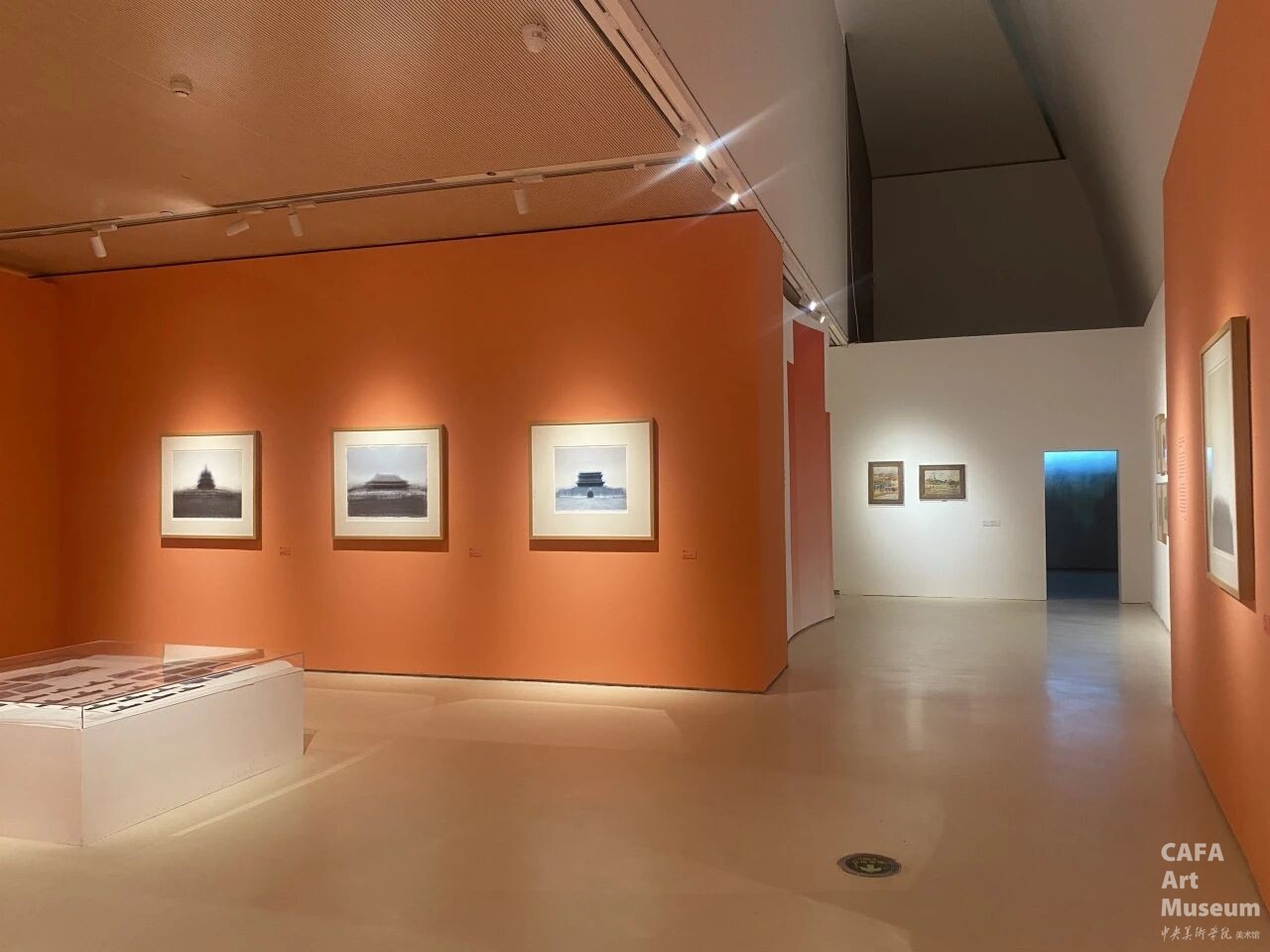

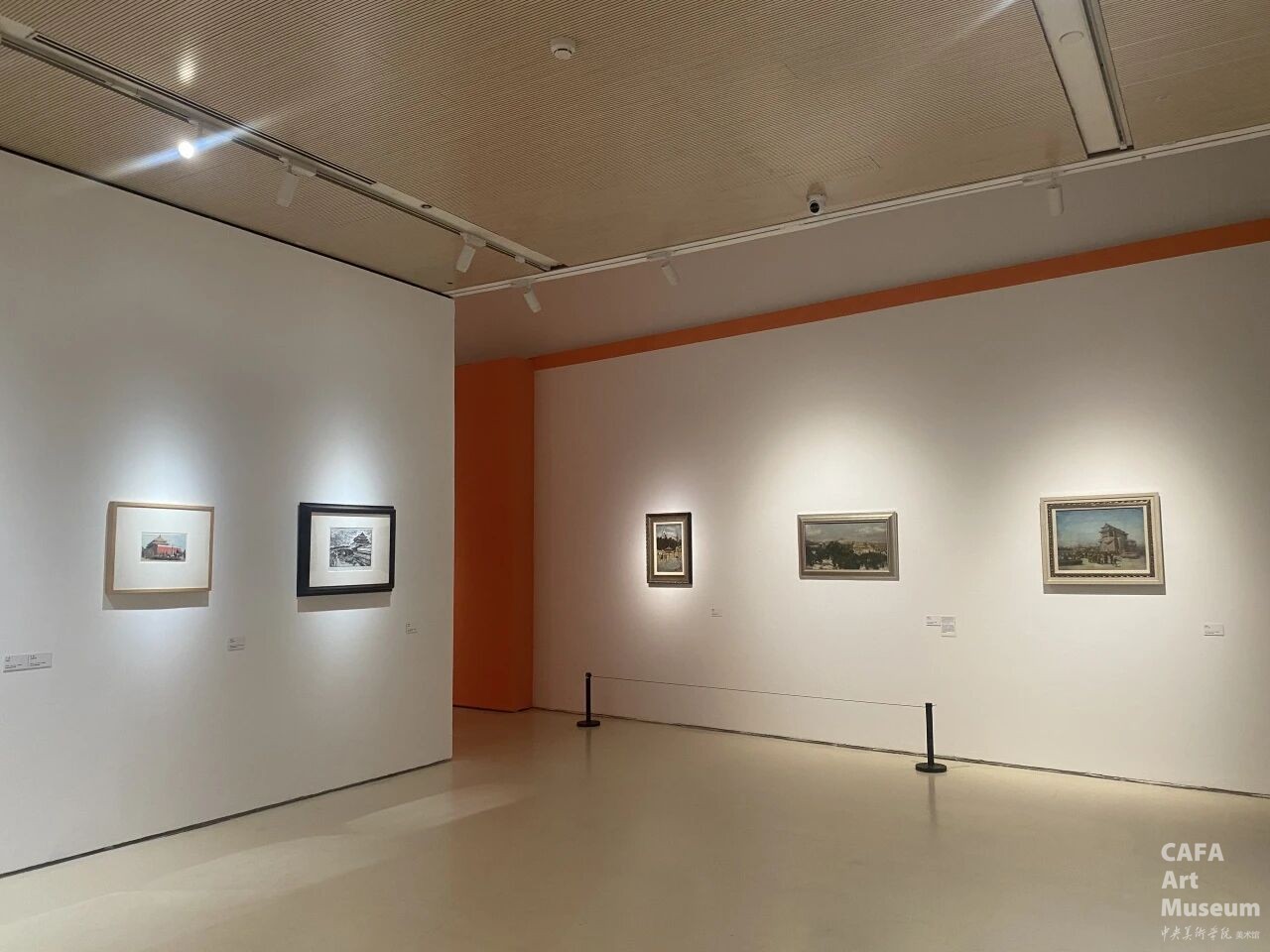
"Rising At Dawn: Beijing-Themed Art Works from CAFA Art Museum Collection" focuses on the artistic narration of Beijing's urban image in the history of modern and contemporary Chinese art. By systematically sorting out Beijing-themed artworks in the collection of the CAFA Art Museum and inviting a number of artists to exhibit their fine and representative works, it in-depth explores the interactive relationship between artistic creation and social context in different historical periods.
With "Morning Rise", "Vitality", "Renewal" and "Choosing the Center" as its narrative threads, the exhibition constructs an artistic dialogue field that transcends time and space: on the one hand, it presents the stylistic evolution of artists from different generations in their depiction of urban landscapes and interpretation of humanistic spirit; on the other hand, it focuses on artists' continuous exploration of urban themes and conceptual innovation in the contemporary context.
Choosing the Center | 4th Section
Beijing's Central Axis is like a wordless historical book engraved on the city, with its grand narrative extending north-south, it interprets the Oriental wisdom of "choosing the center" in architecture. Artists reinterpret this temporal and spatial axis through diverse visual languages—not only to capture the sense of ritual that connects the past and the present, but more importantly, to transform the traditional philosophical thought of "achieving harmony through balance" into a tangible visual experience.
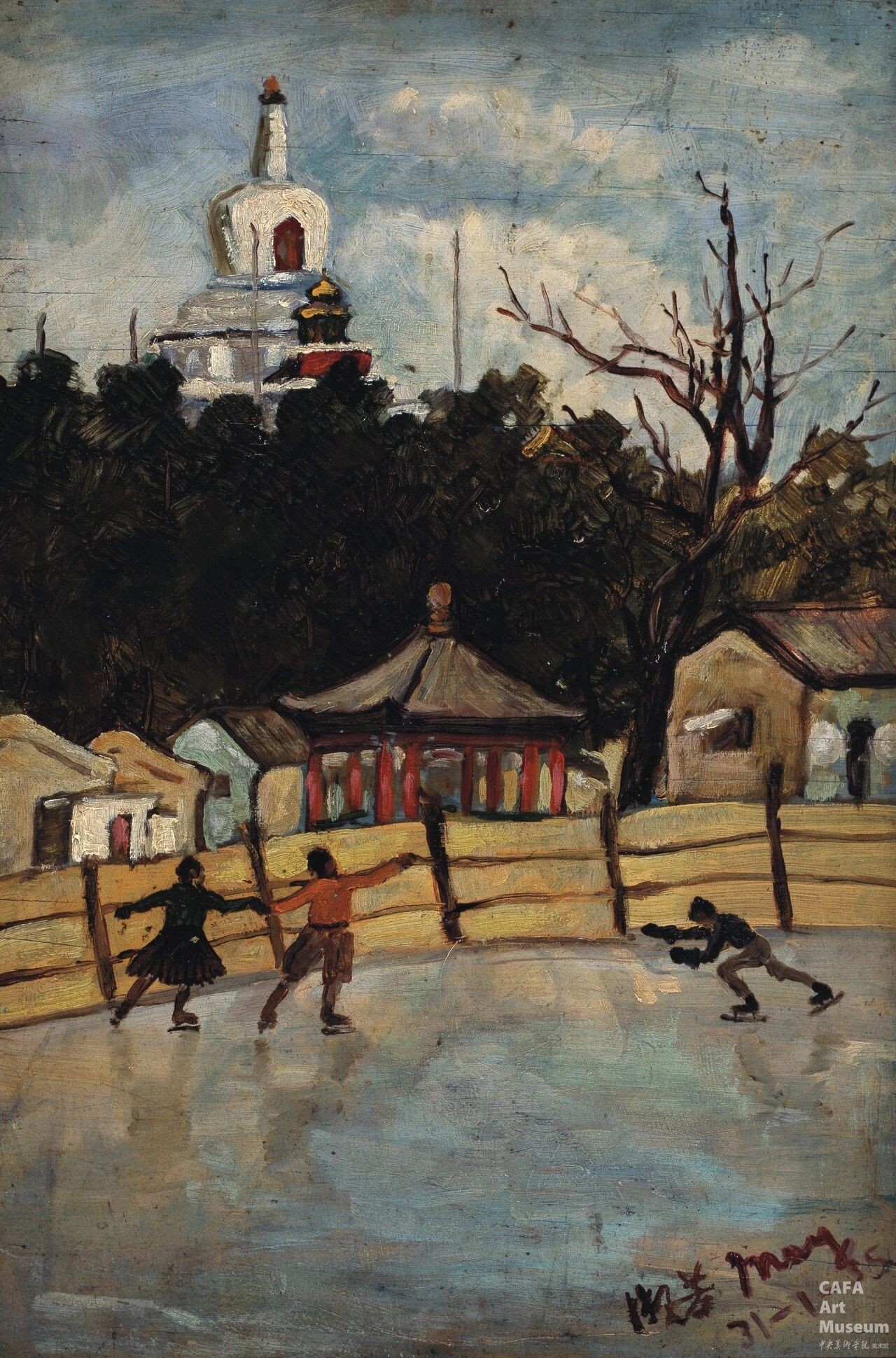
萧淑芳,《北海溜冰》,1935年,46cm×30cm,布面油彩
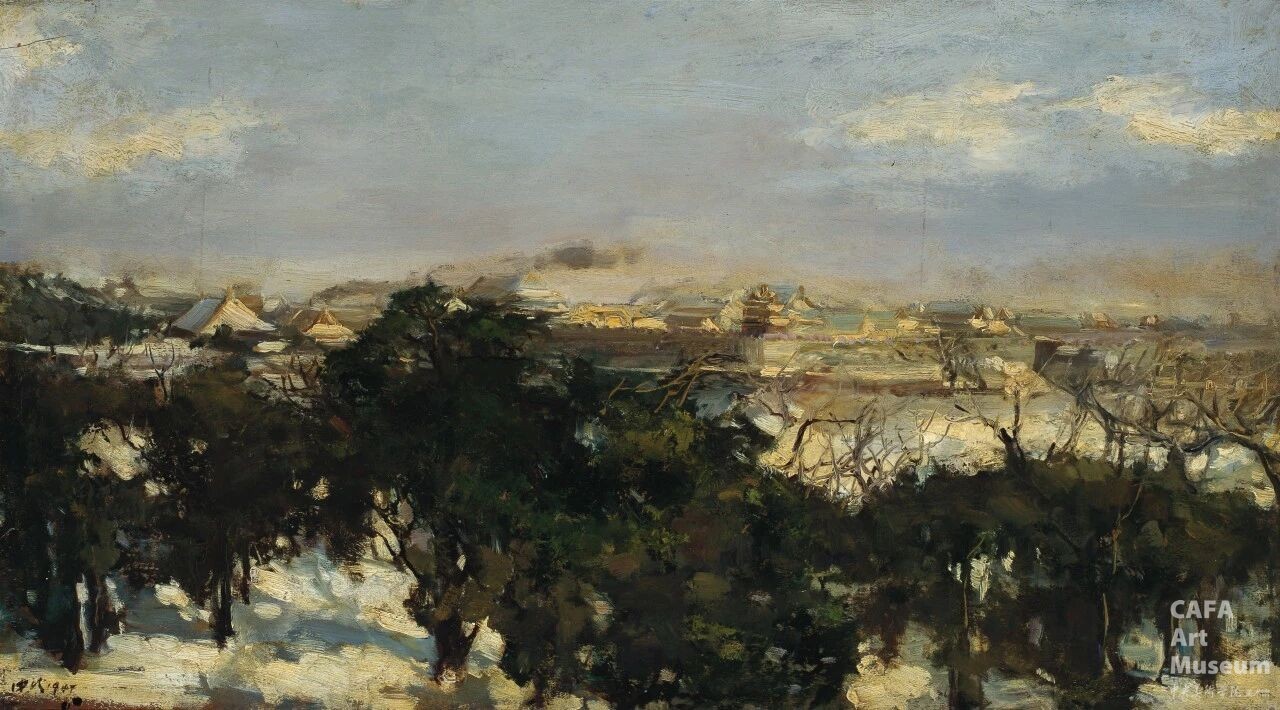
Ai Zhongxin, Remaining Snow on the Forbidden City, 1947, 38cm × 70cm, Oil on Wood Panel
Remaining Snow on the Forbidden City is a lyrical sketch created by Ai Zhongxin after he began teaching at the Beiping School of Art, where he was deeply impressed by the vastness of snowscapes in northern China. The painting adopts an extended horizontal composition, resembling a miniature panoramic scroll. Although the scene depicted is in the depths of winter, the overall color palette exudes a subtle, rippling warmth. Ai Zhongxin was a representative artist of Chinese realistic oil painting in the 20th century. Xu Beihong highly praised his oil paintings for possessing "the brushwork charm of traditional Chinese painting." This work embodies the artist’s artistic achievements in integrating Chinese and Western artistic traditions and exploring native artistic conception.
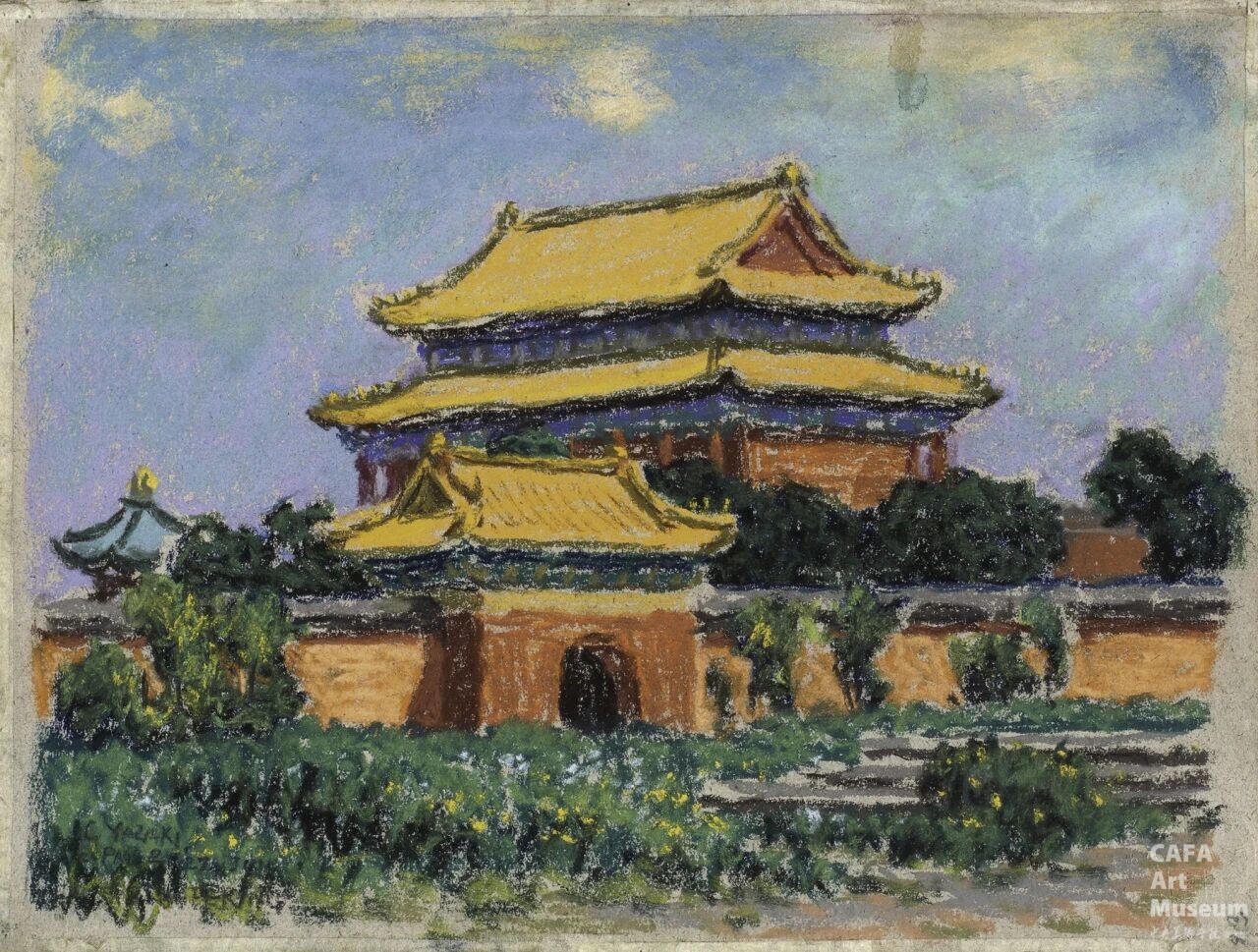
矢崎千代二 C. Yazaki,《北平午门》,20世纪,23.7×31cm,纸本色粉
Meridian Gate of Beiping depicts the solemn outline and Oriental charm of this iconic ancient building in Beijing through delicate pastels. Under the artist’s brush, the majestic momentum of the Meridian Gate presents a unique "Eastern style." The work features warm colors with rich layers—it not only adopts the light and shadow treatment of Western realism but also incorporates the implicit artistic conception of Eastern painting. Chiyoji Yazaki was a renowned Japanese pastel artist. He settled in Beijing in 1938 and resided there until his passing in 1947. He donated all 1,008 pastel works he created in his lifetime to the education sector and was later hired by Xu Beihong as a lecturer at the National Beiping School of Art. The pastel-on-paper works with Beijing themes exhibited this time embody the affection this foreign artist held for the ancient city.
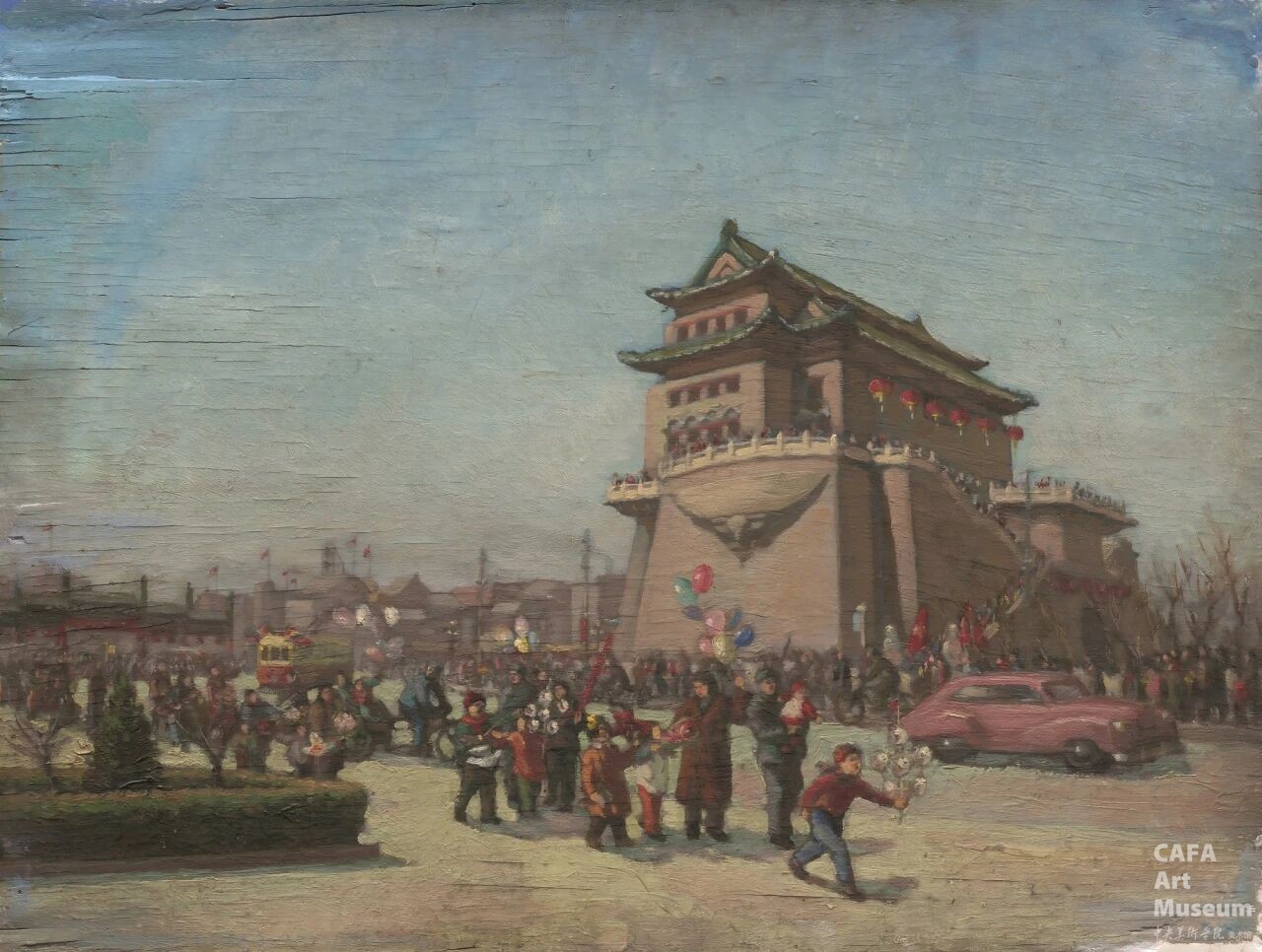
文金扬,《前门、春节》,1955年,43cm×56.5cm,木板油画
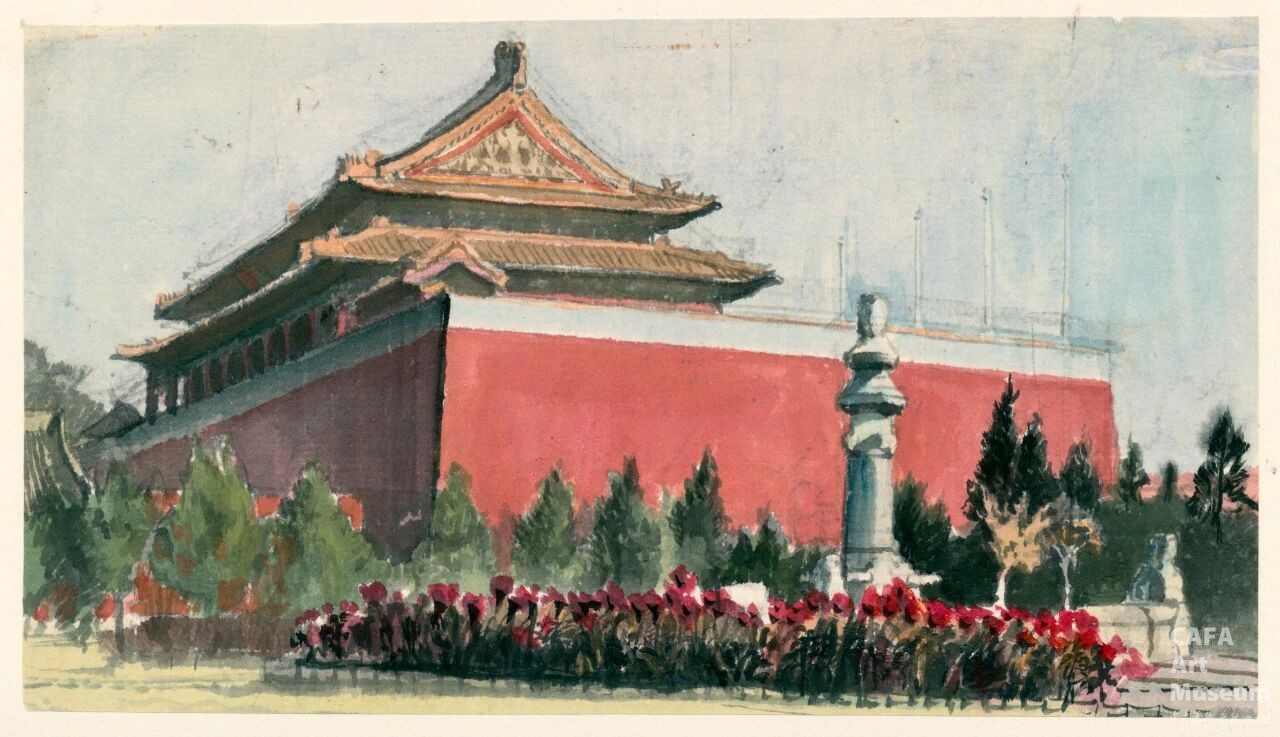
杨澧,《天安门西侧》,20世纪50年代,15cm×26.5cm,纸本水彩
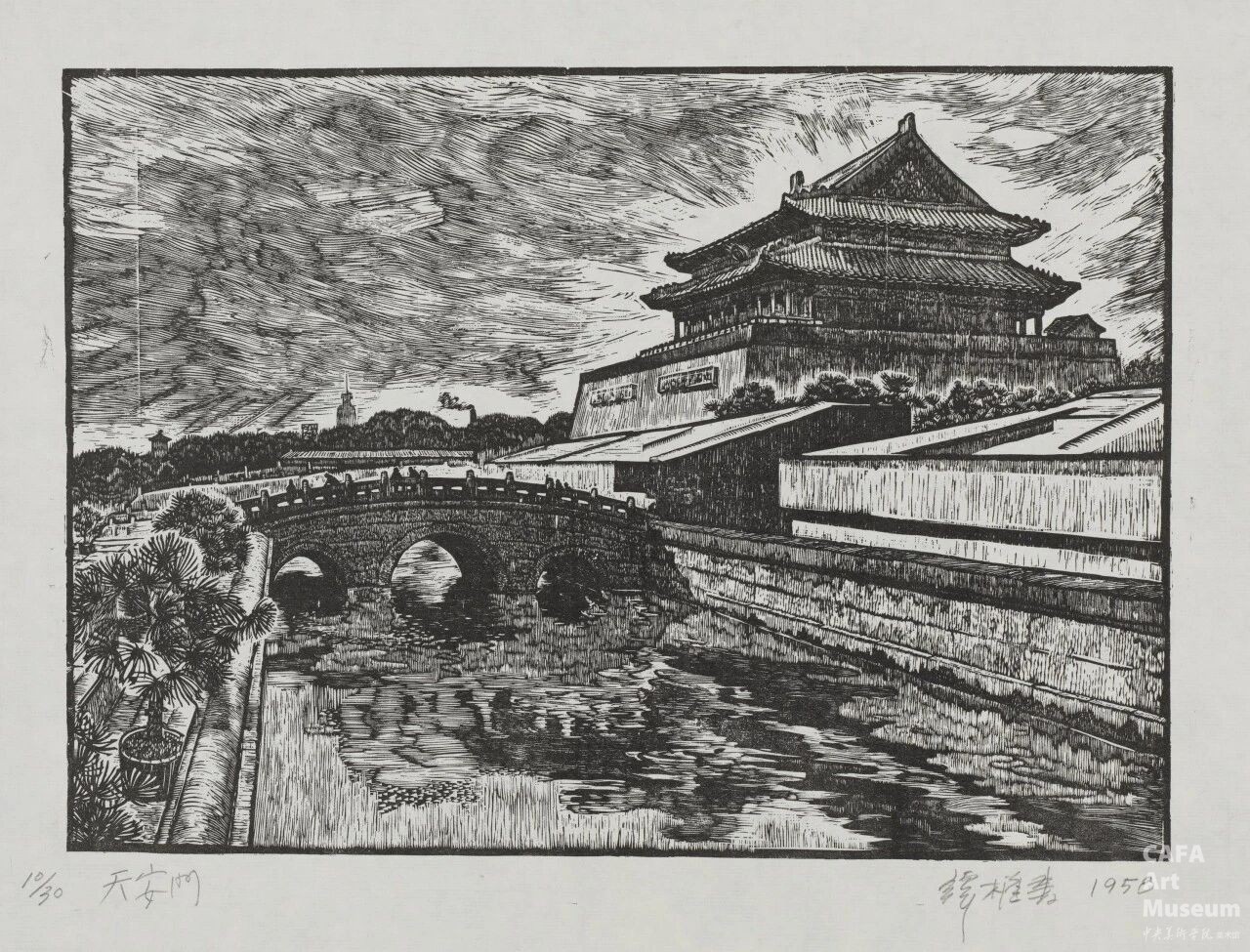
谭权书,《天安门》,1958年,25.5cm×35.5cm,木版单色
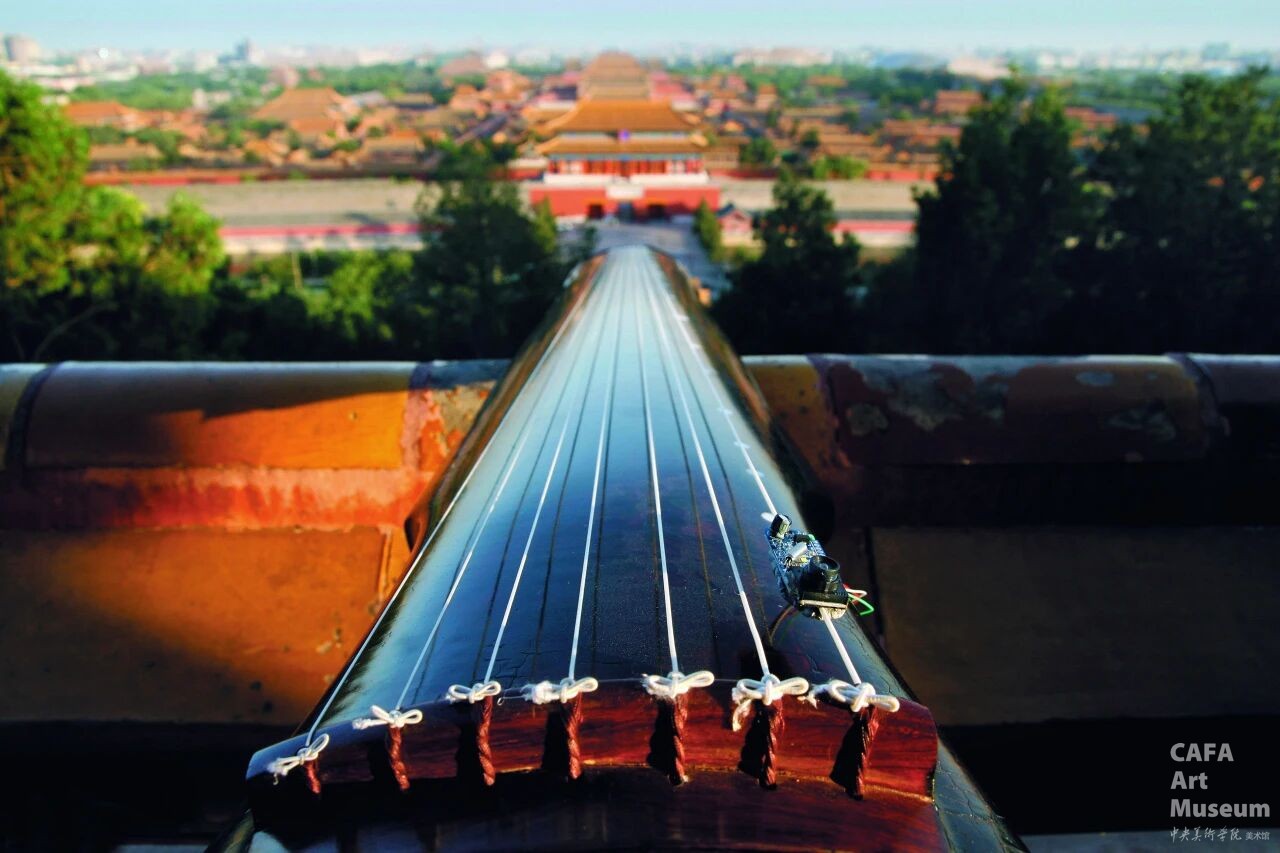
邓华、傅真,《琴景》,2011年—2012年,3分28秒,影像
Qin and Scene adopts a perspective overlooking the panoramic view of the Forbidden City from Jingshan Mountain, poetically combining the sound of guqin performance with the images of the ancient imperial capital. Every time the artist tightens the guqin’s tuning pegs to raise the pitch, the images of the Forbidden City jump and change accordingly; when the guqin reaches its highest pitch, the images of the palaces vanish suddenly at the moment the strings snap. Deng Hua and Fu Zhen have collaborated on creative works since 2008, focusing on the exploration of individual identity and collective memory. The guqin, ranking first among the four arts 'namely guqin, go, calligraphy, and painting' of the Chinese Scholar, is regarded as a symbol of elegance and virtue. Through the dialogue between the guqin and the Forbidden City, the work presents the tenacious vitality of traditional culture and reveals the complex and subtle relationship between traditional culture and contemporary society.
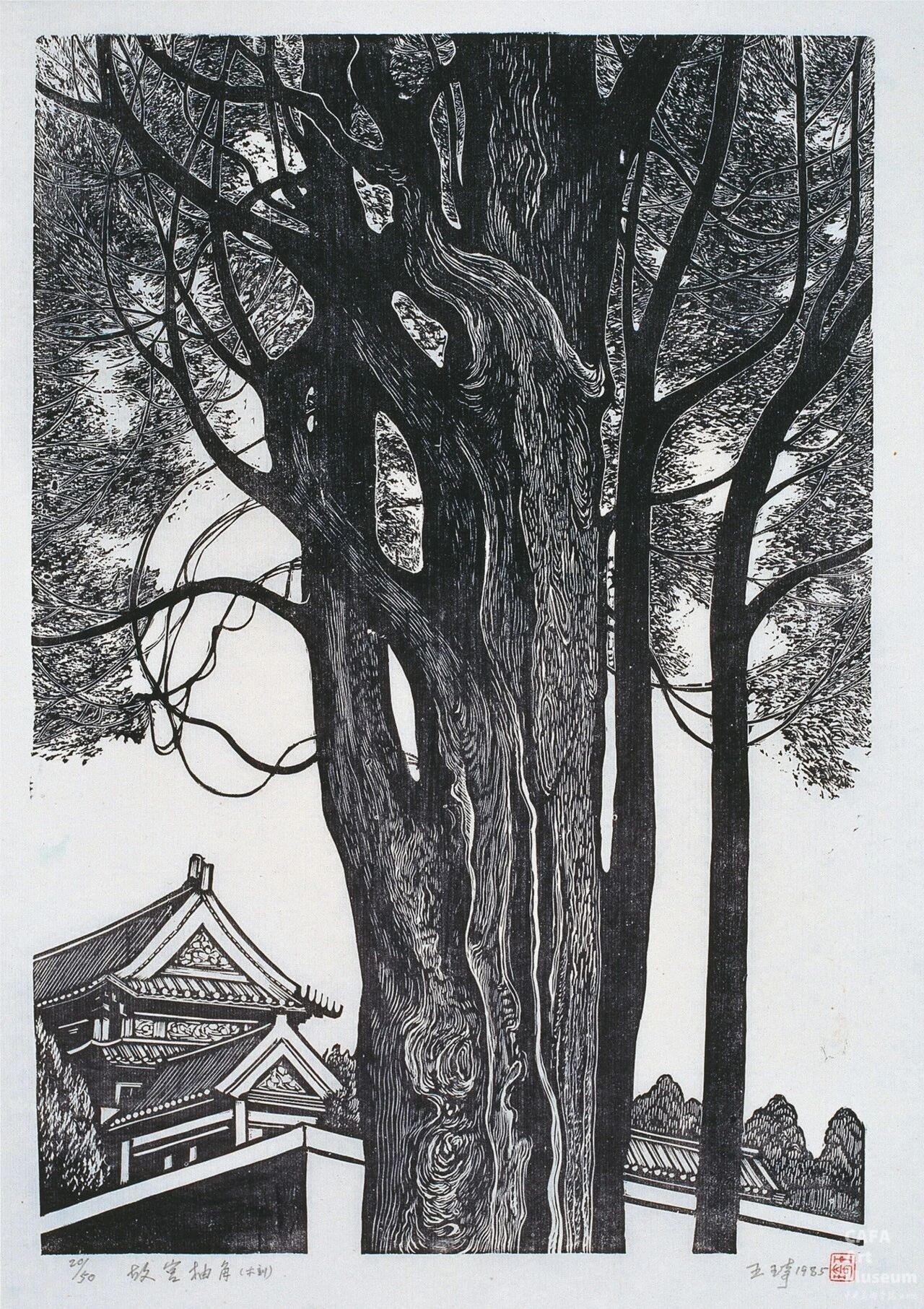
王琦,《故宫楼角》,1985年,42cm×28cm,木版单色
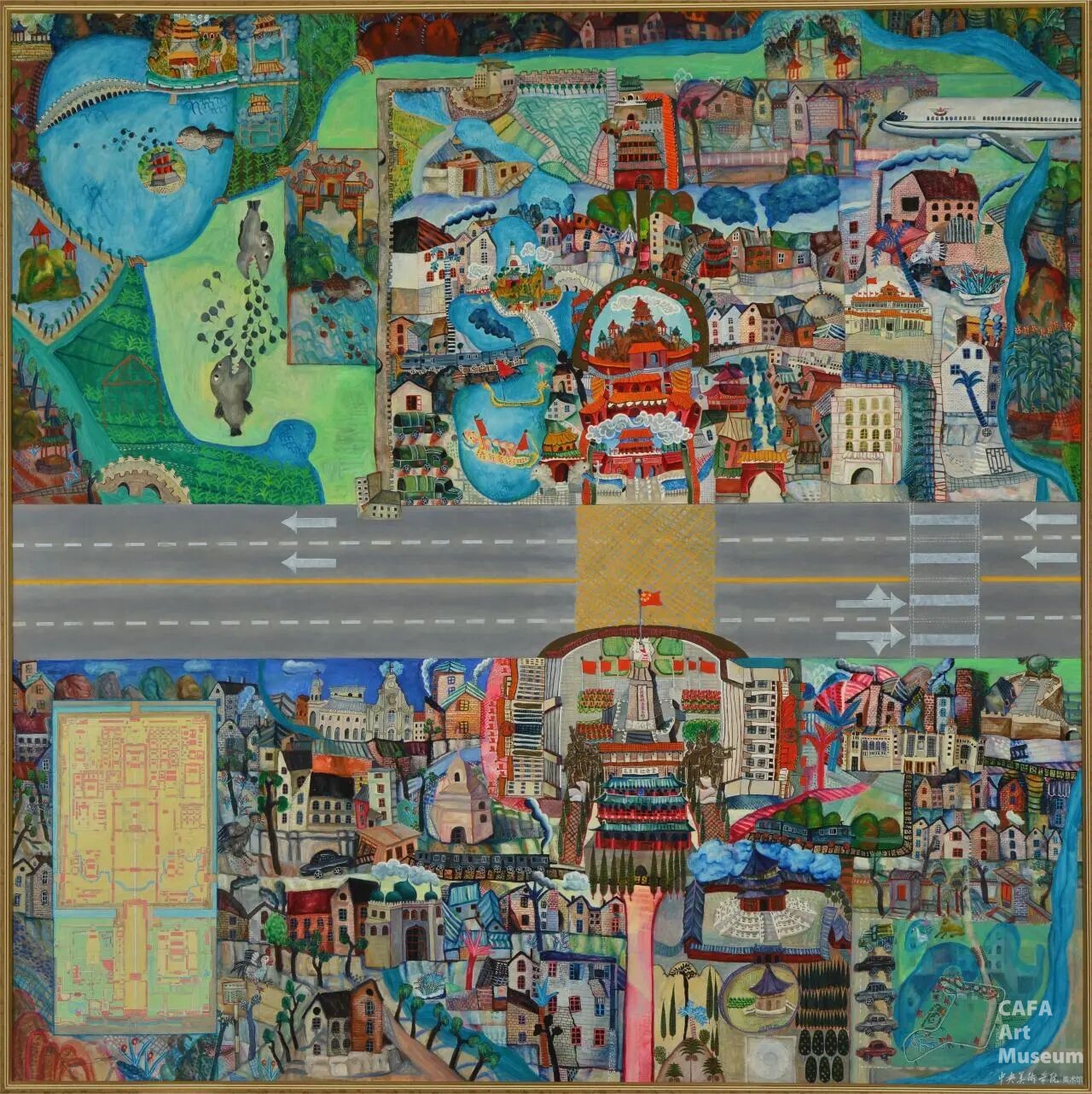
宋红雨,《北京胜境全景》,1992年199.5cm×199.5cm,布面油彩
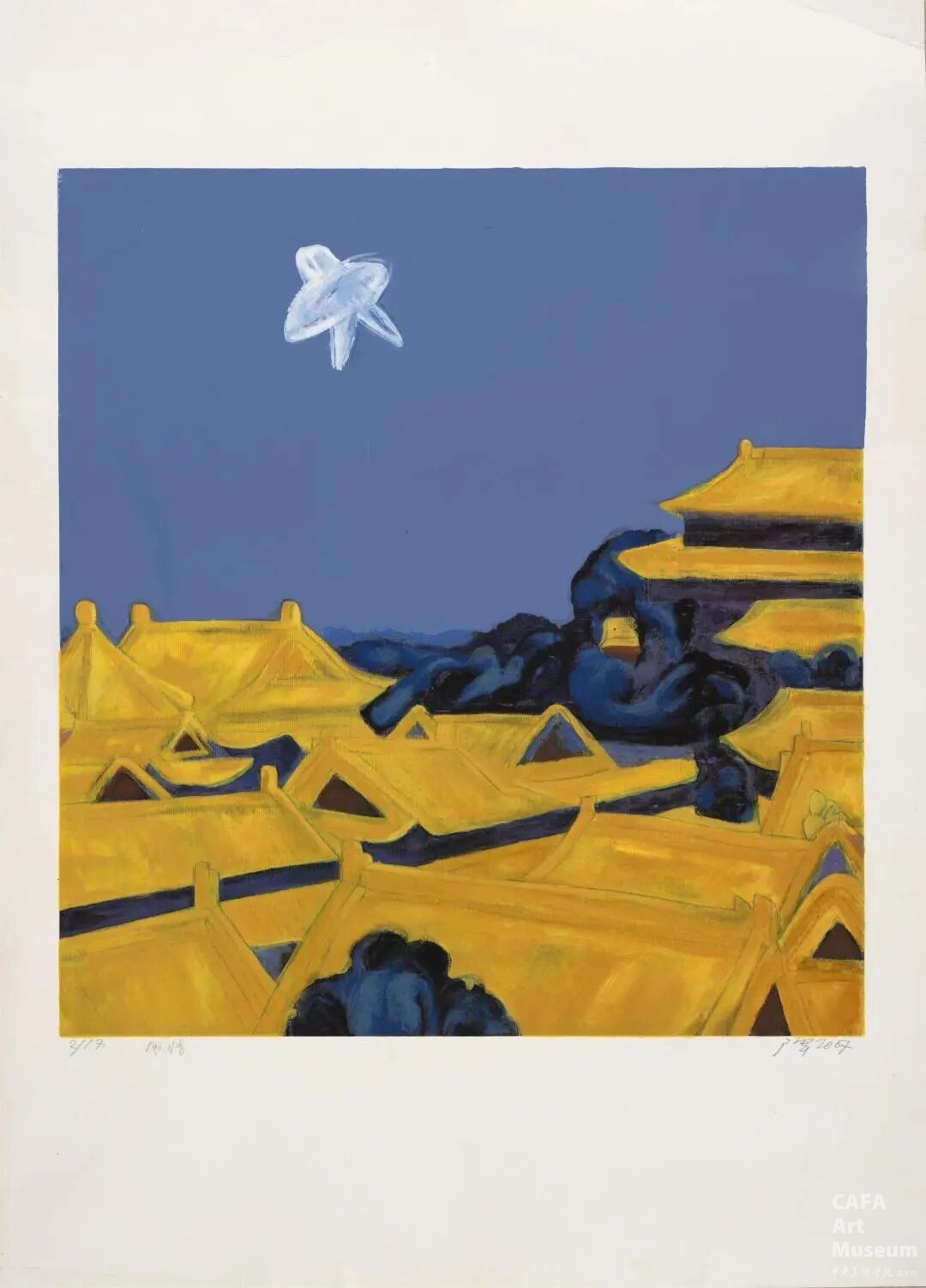
广军,《风情》,2007年,70cm×65cm,丝网套色
Scenery and Atmosphere presents highly condensed imagery, vividly depicting a Beijing swallow kite floating in the blue sky above the Palace Museum. The work's colors and lines are concise and succinct yet brim with tension—echoing Guang Jun's consistent artistic style: relaxed and witty, achieving much with little, and rich in ideological connotation. Since the late 1970s, Guang Jun has been participating in and organizing various printmaking activities, and he is a pioneer of screen printing creation in China. Meanwhile, he is also an oil painter. Regardless of the form of artistic creation, his works integrate his personal ideals and reflections on humanity, exuding a sense of freedom, ease, and thought-provoking charm.
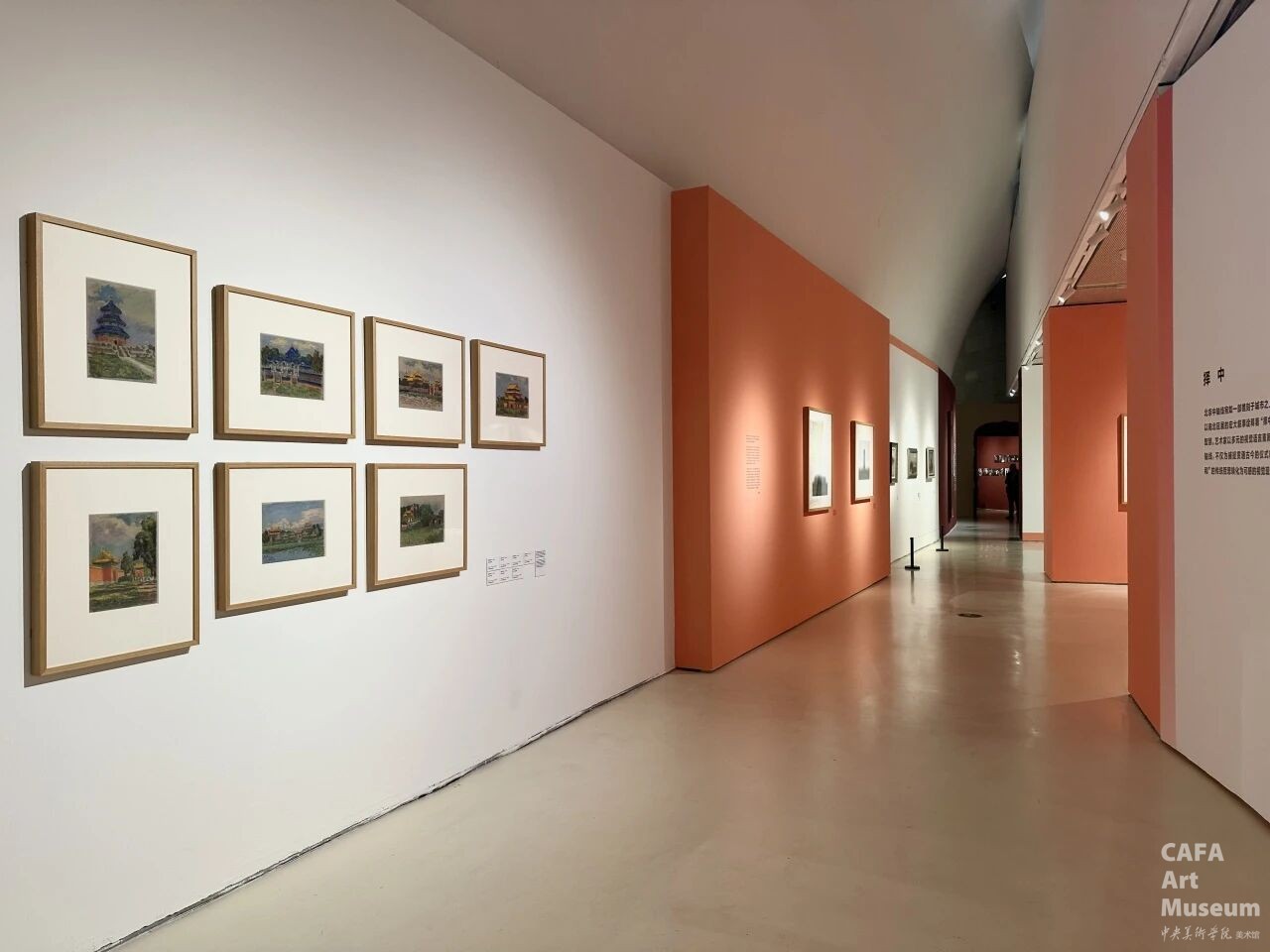
Featured Artist: Zhou Jirong | 4th Section
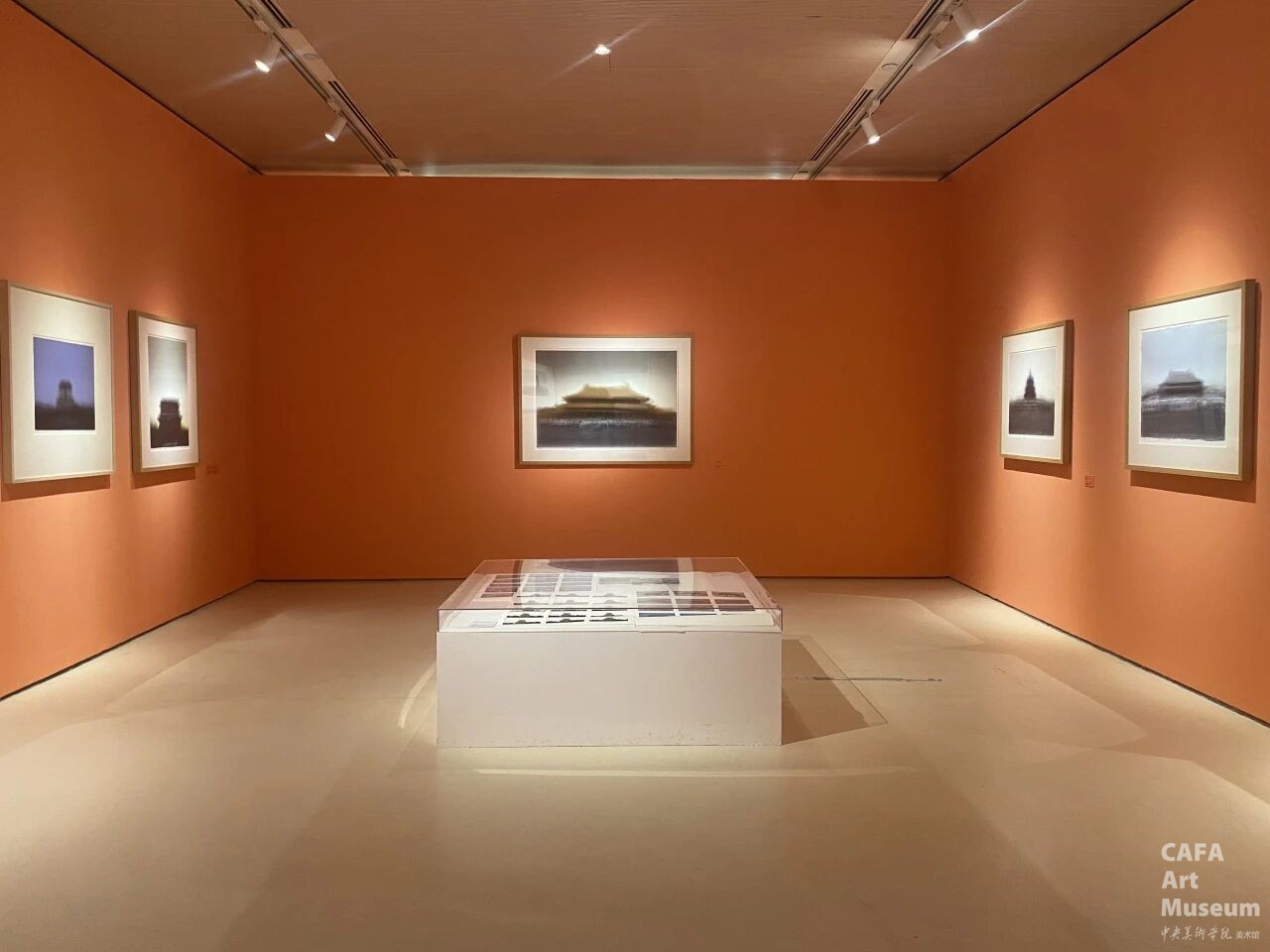
Zhou Jirong was born in Guizhou Province in 1962. He graduated from the Printmaking Department of the China Central Academy of Fine Arts in 1987 and pursued advanced studies at the Real Academia de Bellas Artes de San Fernando (Royal Academy of Fine Arts of San Fernando) in Spain in 1996. Currently, he serves as Associate Professor and Deputy Director of the Printmaking Department at CAFA, Head of the 2nd Studio of the Printmaking Department, and a member of the China Artists Association.
His artistic practice explores the aesthetic significance of various printmaking impressions. Using a unique printmaking language, he depicts both the new and old aspects of Beijing, which is filled with humanistic concern.
Zhou Jirong’s Landscape Series continues his long-standing focus on urban themes. Taking Beijing’s Central Axis as a starting point, this series unfolds reflections on Beijing—a city with profound historical deposits, yet in the midst of dramatic transformation. The series features over a dozen iconic and authoritative buildings from different eras along the Central Axis. When the Bird’s Nest, the Palace Museum, and the Arrow Tower are placed in juxtaposition, they seem to be detached from the bustle of the present moment and situated within the dimension of history. This grants viewers a calm sense of distance, as if looking back on the present from the future in the long river of time.
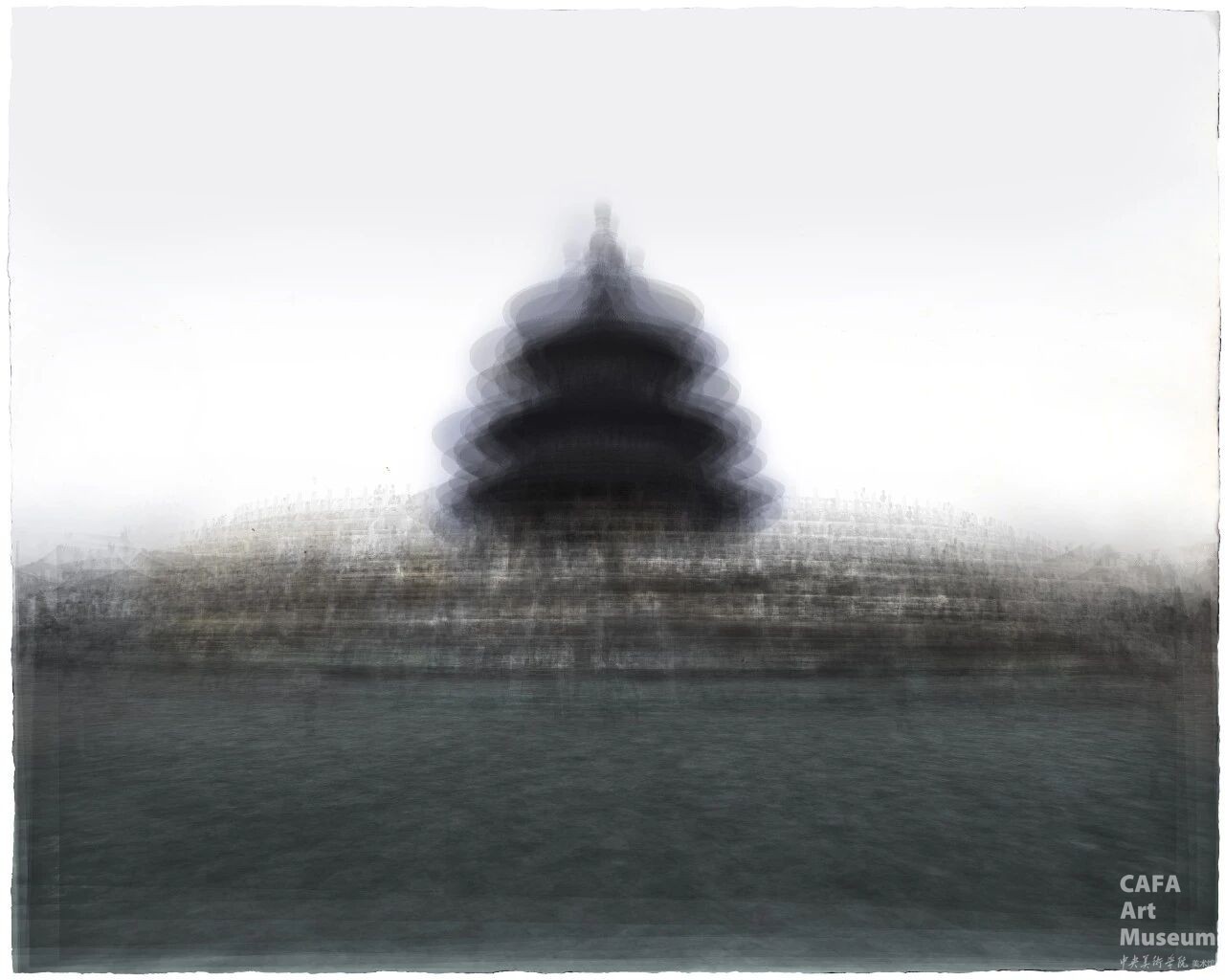
Zhou Jirong, Landscape – Temple of Heaven, 2013, 60cm × 75cm, Comprehensive Printmaking

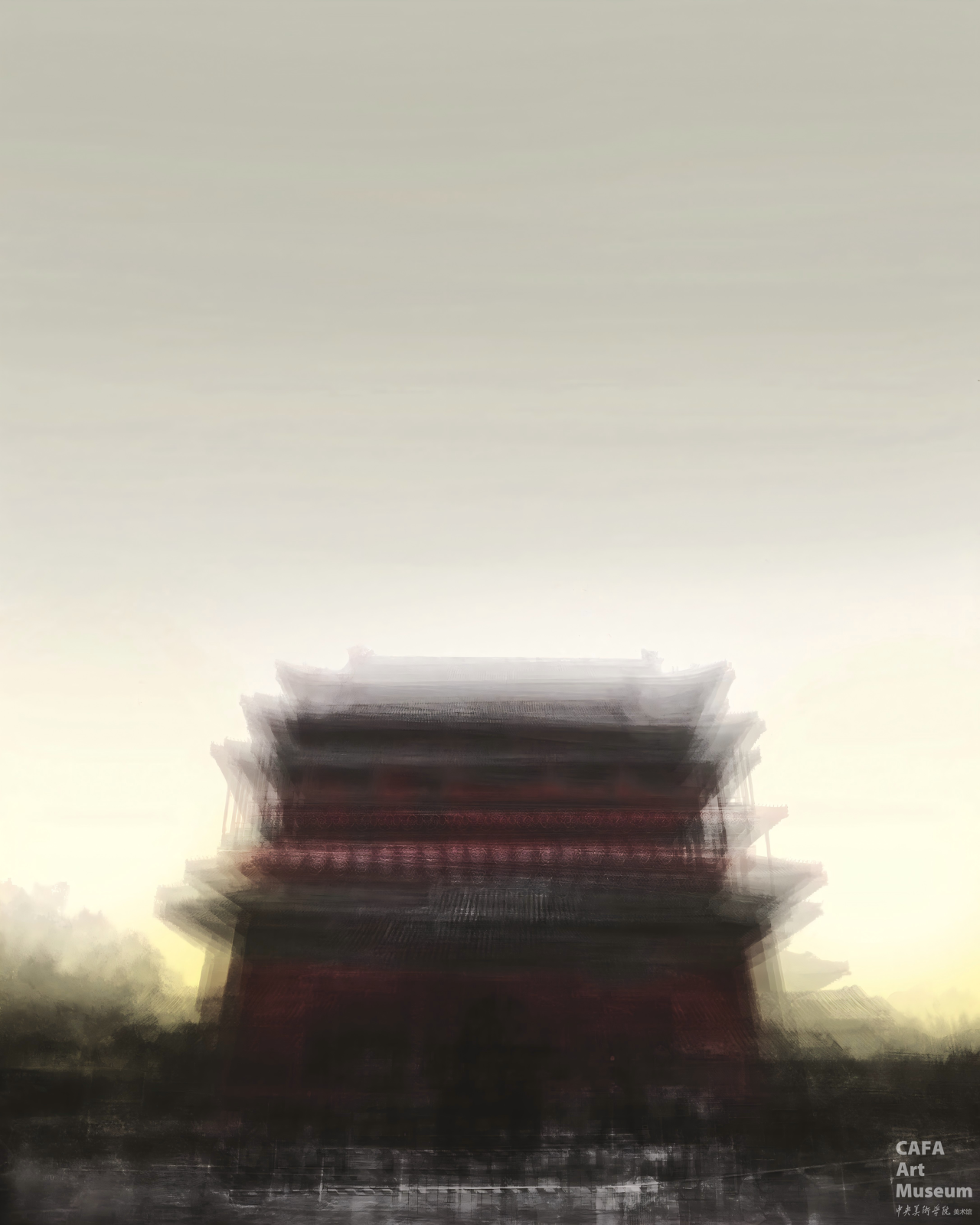
周吉荣,《景观——鼓楼》,2013年,75cm×60cm,综合版画
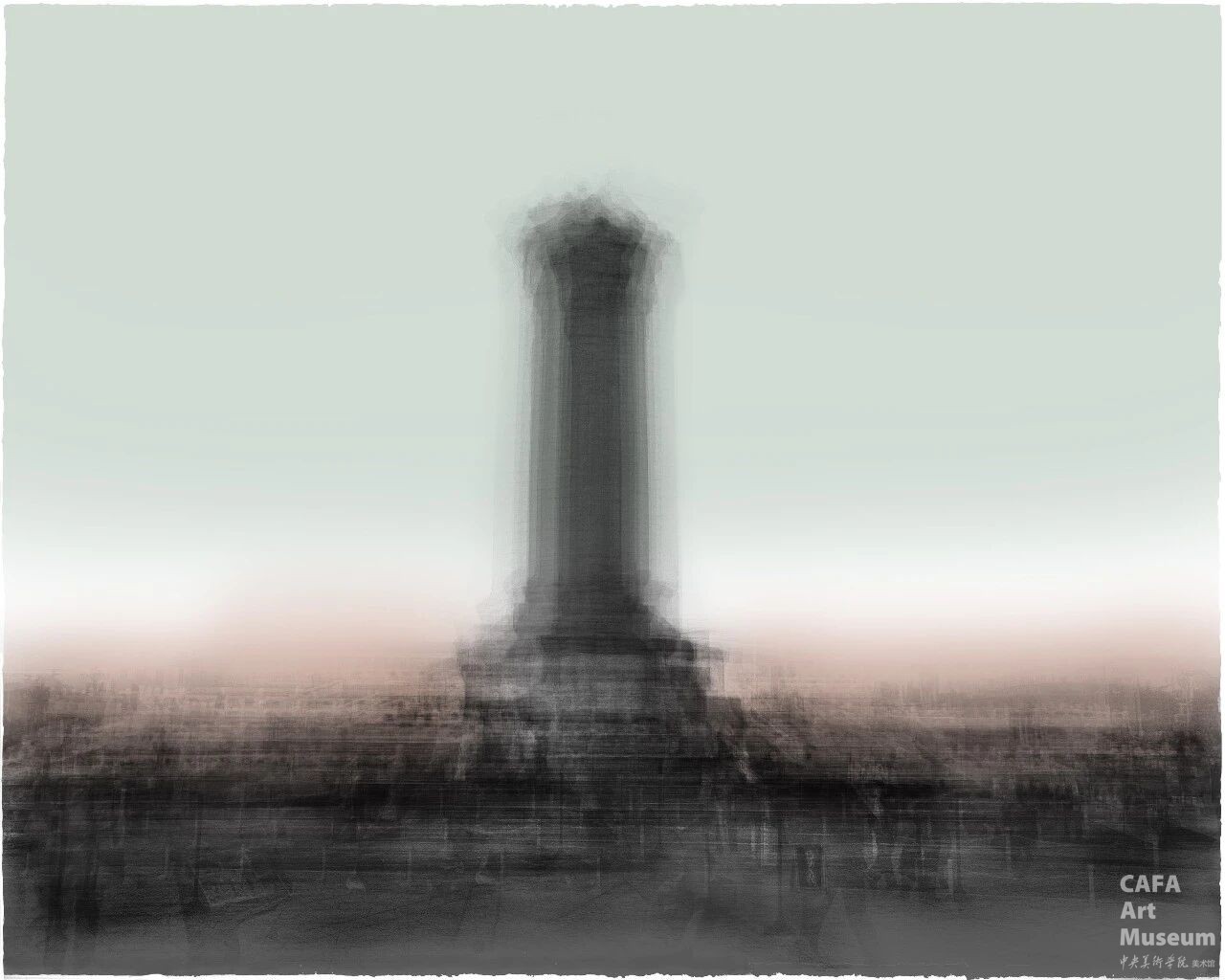
周吉荣,《景观——碑》,2013年,60cm×75cm,综合版画
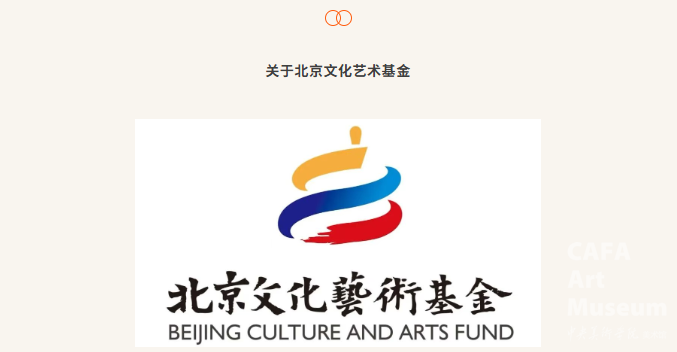
The Beijing Cultural and Art Fund is a public welfare fund initiated and established by the Beijing Municipal Bureau of Culture and Tourism. It focuses on providing support in three key areas: stage art creation, cultural communication and exchange, and art talent cultivation. The fund accepts applications from the public, its funding process is subject to social supervision, and the outcomes of its funded projects are shared with the public. This maximizes the enthusiasm of social forces to participate in cultural development, builds an open, equal, public, and transparent art funding system, and fully leverages the demonstration and leading role of Beijing as a national cultural center.
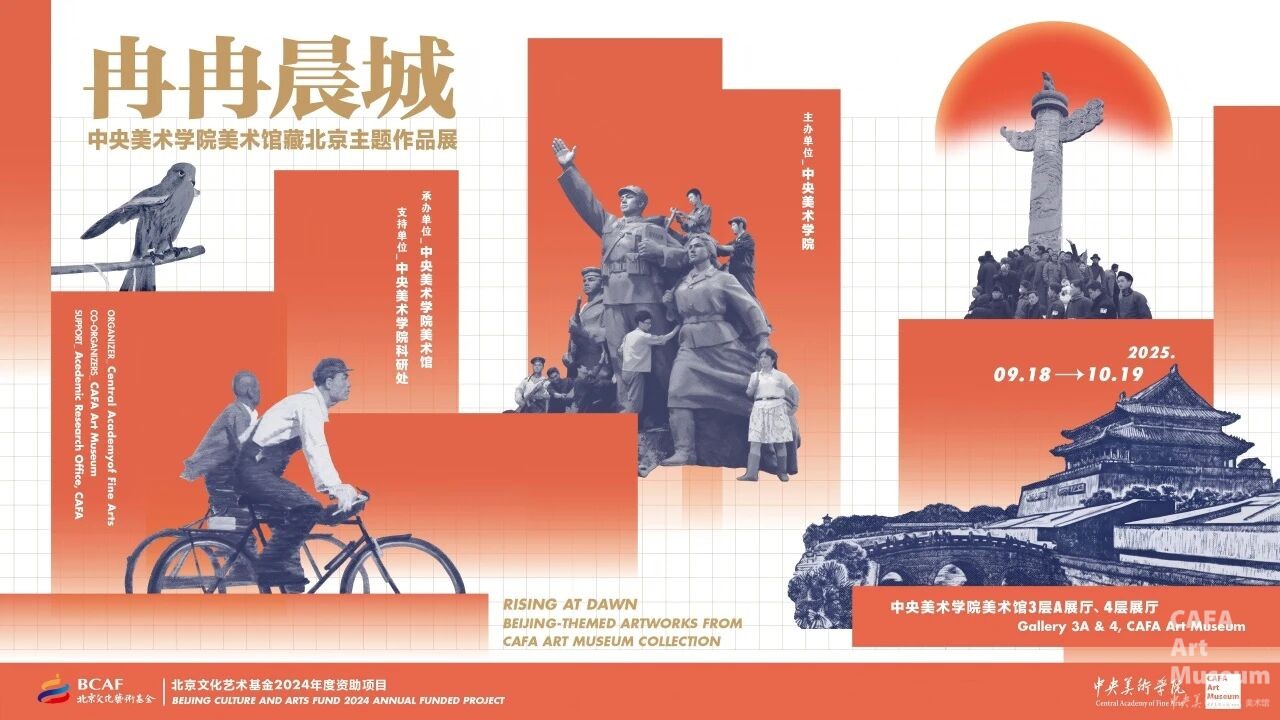
2024 Funding Project of Beijing Cultural and Art Fund
Rising At Dawn
—Beijing-Themed Artworks from CAFA Art Museum Collection
Exhibition Dates: September 18 – October 19, 2025
Venue: 3A and 4th Floor Exhibition Hall , CAFA Art Museum
Host: Central Academy of Fine Arts
Co-organizer: CAFA Art Museum
Supporter: Office of Research Administration, Central Academy of Fine Arts
Chief Editor / He Yisha
Editor / Du Yinzhu
